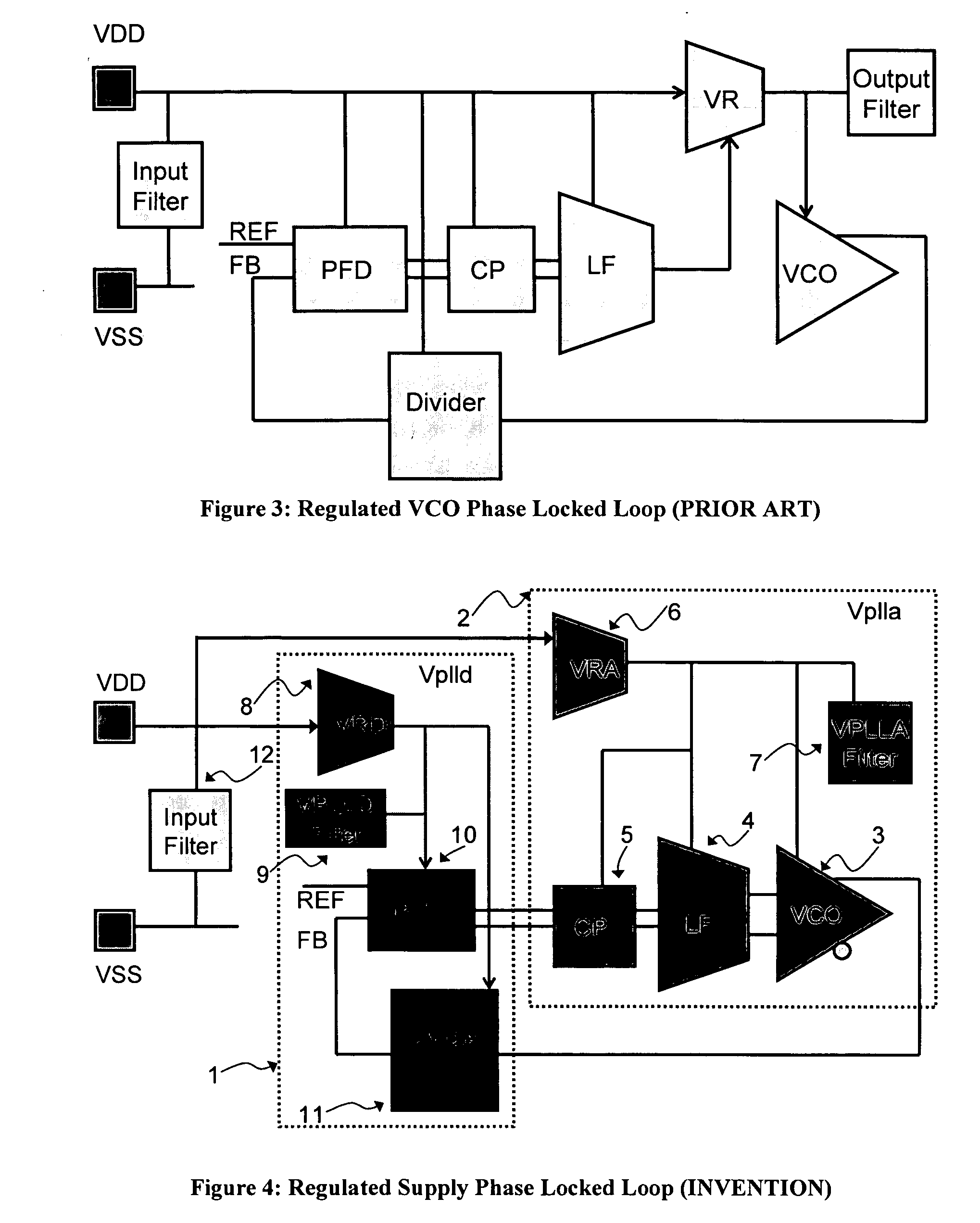Regulated supply phase locked loop
a phase lock loop and phase lock technology, applied in the field of electronic circuitry, can solve the problems of distorted and small-value signals at the receiver, contribute to skew and jitter, and the pll's are particularly susceptible to power supply noise, and achieve the effect of minimizing pll jitter and low nois
- Summary
- Abstract
- Description
- Claims
- Application Information
AI Technical Summary
Benefits of technology
Problems solved by technology
Method used
Image
Examples
Embodiment Construction
[0013]Prior art embodiments are illustrated in FIGS. 1, 2 and 3. As described in the background, two forms of supply regulation are common in the art. FIG. 2 shows the typical supply regulated PLL, where the operating supply for the PLL is derived from a voltage regulated version of an input supply voltage. Buck, linear regulators are commonly used in this architecture. FIG. 3 illustrates another prior art supply regulated PLL where the operating supply voltage of the VCO (or oscillatory component) of the PLL is regulated, and also serves as the control that determines the output frequency of the VCO. In this architecture, the regulator becomes a key component in the control loop of the PLL, and its characteristics are designed so as to achieve desired loop behavior as well as to minimize jitter induced in the output of the VCO.
[0014]FIG. 4 shows an embodiment of the invention. In this supply regulation architecture, PLL sub-components are classified as being either noise-generating...
PUM
 Login to View More
Login to View More Abstract
Description
Claims
Application Information
 Login to View More
Login to View More - R&D
- Intellectual Property
- Life Sciences
- Materials
- Tech Scout
- Unparalleled Data Quality
- Higher Quality Content
- 60% Fewer Hallucinations
Browse by: Latest US Patents, China's latest patents, Technical Efficacy Thesaurus, Application Domain, Technology Topic, Popular Technical Reports.
© 2025 PatSnap. All rights reserved.Legal|Privacy policy|Modern Slavery Act Transparency Statement|Sitemap|About US| Contact US: help@patsnap.com



